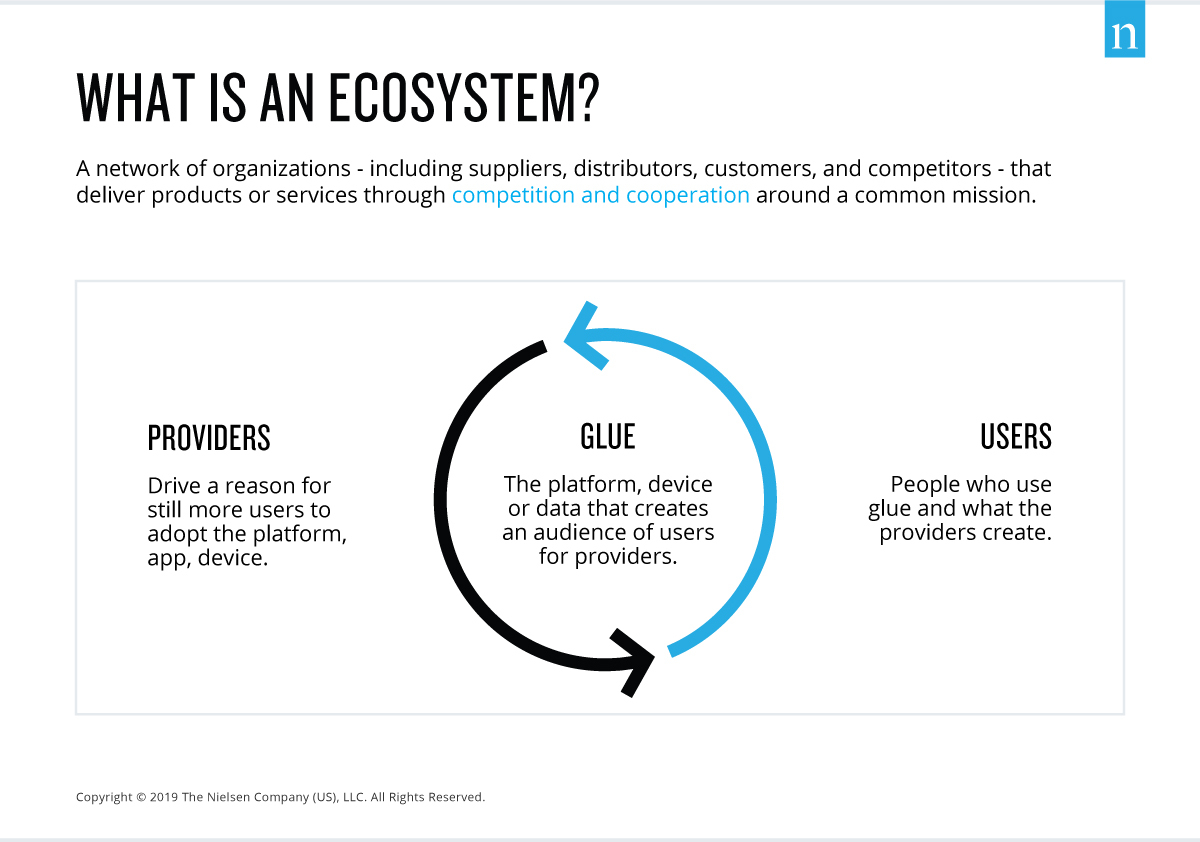What do ecosystems look like?
In the consumer packaged goods space (CPG), one of the largest manufacturers in the world expanded its recipe app to become a pantry-management tool, effectively creating an ecosystem. Within the ecosystem, a user picks their recipes, which prompts an automatically generated-shopping list and seamlessly connects with Peapod, a grocery delivery service. Delta Air Line’s mobile app is another example, which connects to ride-share services so travelers can order a car when they land. You might also be familiar with the interconnectivity of the health apps on your phone. Specifically, you likely use an array of apps to track different facets of your health and wellness, all of which result is a seamless experience for you centered around the device you turn to for truth.
Simply put, an ecosystem puts your customer’s end-to-end journey at the center of the experience. You can see then how this quickly creates the need for service providers to work together with one another, and more importantly, how this fact shapes a customer’s overall relationship with the company.
The future of ecosystems will require the platforms they operate in to be open, dynamic and therefore integrated. In that way, they can be functional in real time. This has been our focus at NielsenIQ.
That’s why we created the industry’s largest open ecosystem of tech-driven solution providers for retailers and manufacturers in the CPG space. Oftentimes with partner ecosystems, you’re limited to the vendors the company chooses for you, making it hard to reach a broad range of services. Our ecosystem gives you access to a broad array of partners, with the added flexibility of allowing you to bring your preferred vendors to the network. This has driven business value for more than 150 NielsenIQ clients by allowing third parties to directly access NielsenIQ data on our client’s behalf. In creating an ecosystem centered around the same data—or the same language—clients receive more relevant and accurate results that better align with the way they measure business success.
The future of this ecosystem will continue to empower you. As it grows, you will continue finding complementary companies that help to keep pace with consumer needs and understand the quickly changing landscape in which these consumers shop. Just like James Moore mentioned 58 years ago, our ecosystem is helping you co-evolve cooperatively, attracting diverse partners who provide innovative solutions to solve our client’s most difficult challenges. Whether you’re a user of the ecosystem or a contributor to it, plugging in allows you to:
- Improve your customer’s journey and experience with you
- Find new customers to sell to
- Find new partners to work with
- Tap into new sources of data, software, or resources
- Improve business processes
And remember, your customers decide who they want to engage with based on whose ecosystem they want to be a part of. Whether it’s tracking their sleep, connecting their customer relationship management platform, or collaborating on documents, they commit to ecosystems that can integrate seamlessly with their personal and work environments. For that reason, companies should set out to design their hardware, software, and services based on what ecosystem will drive that customer value.




